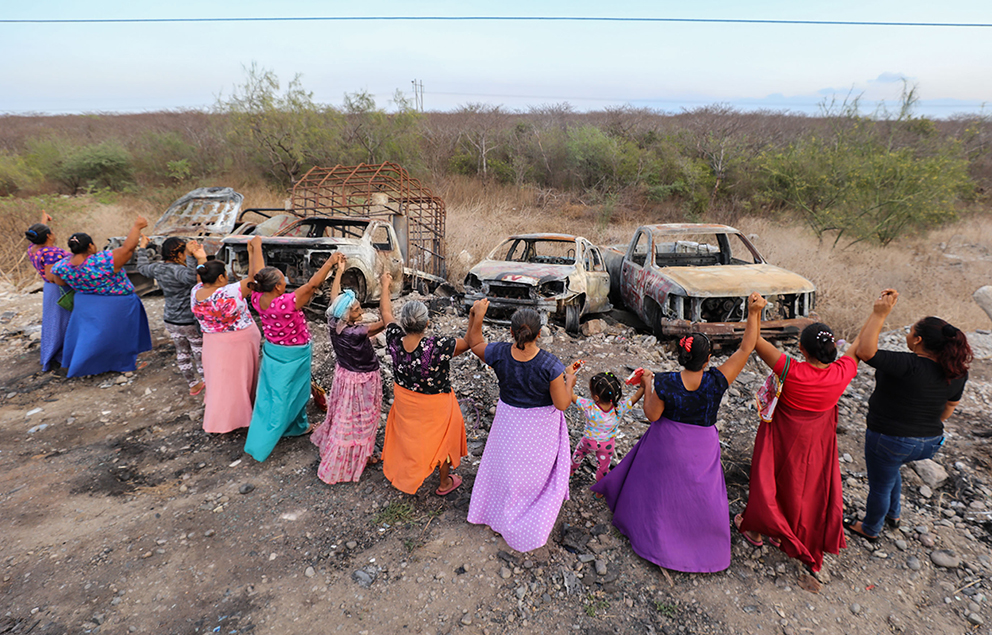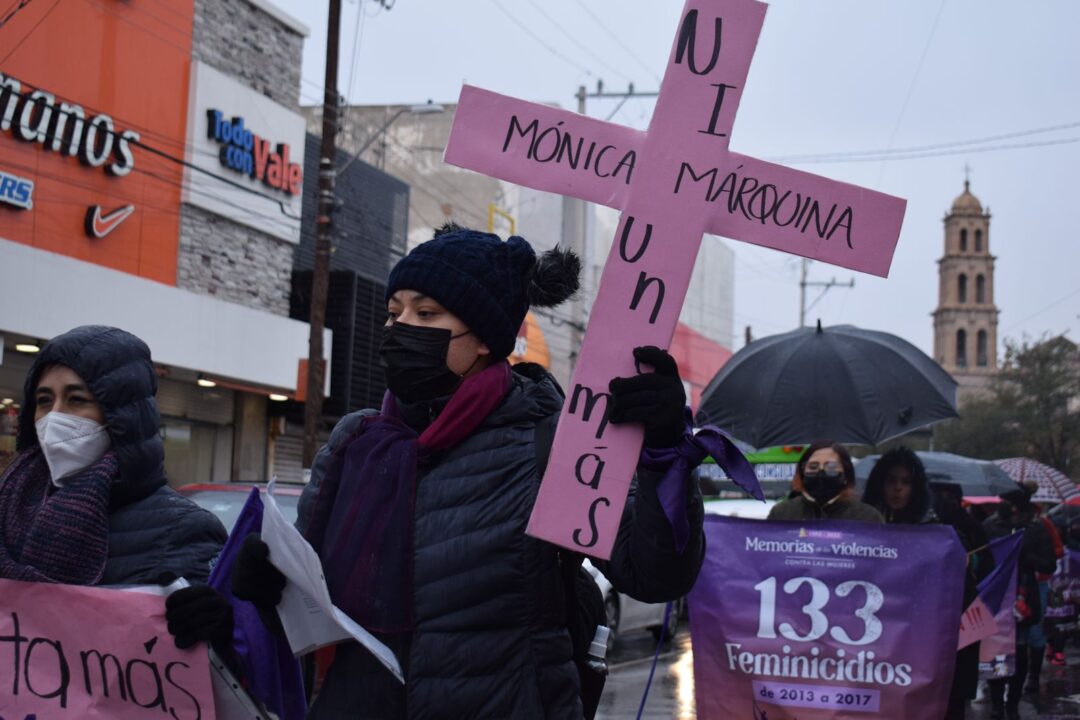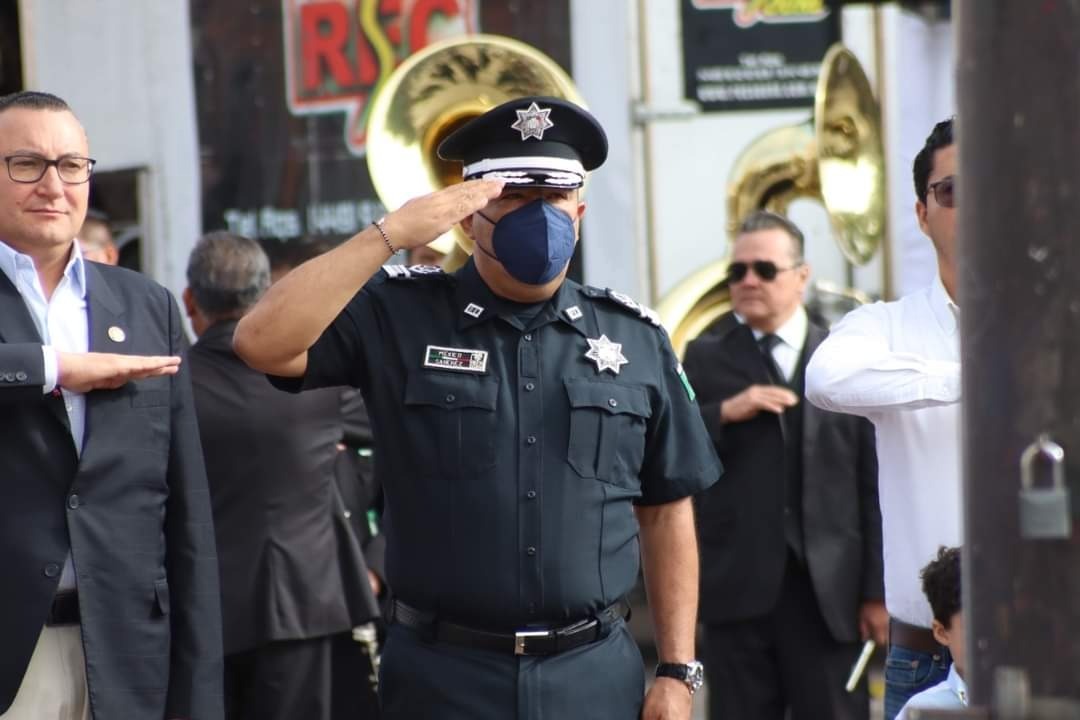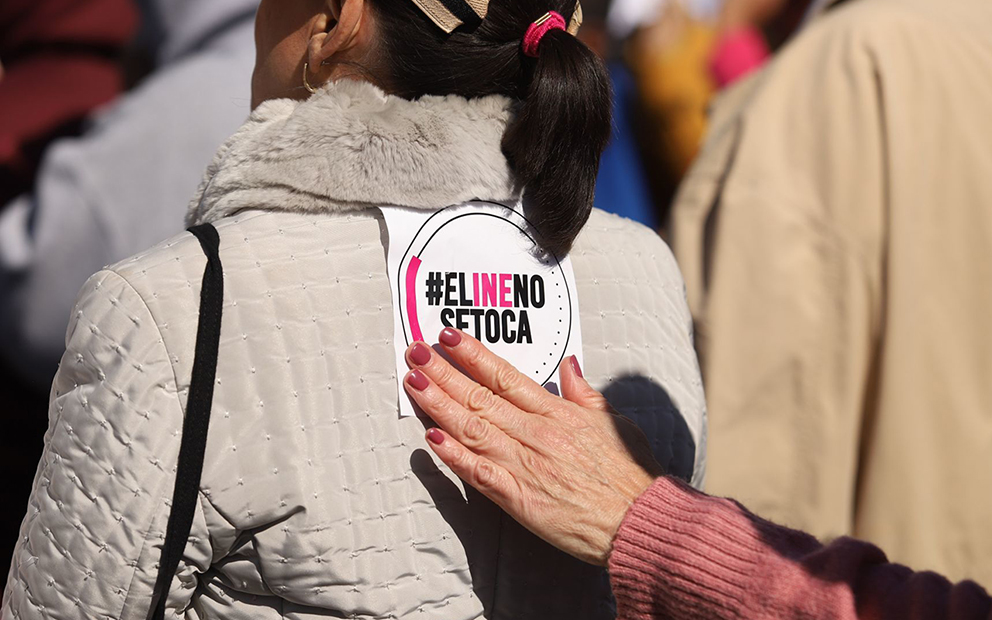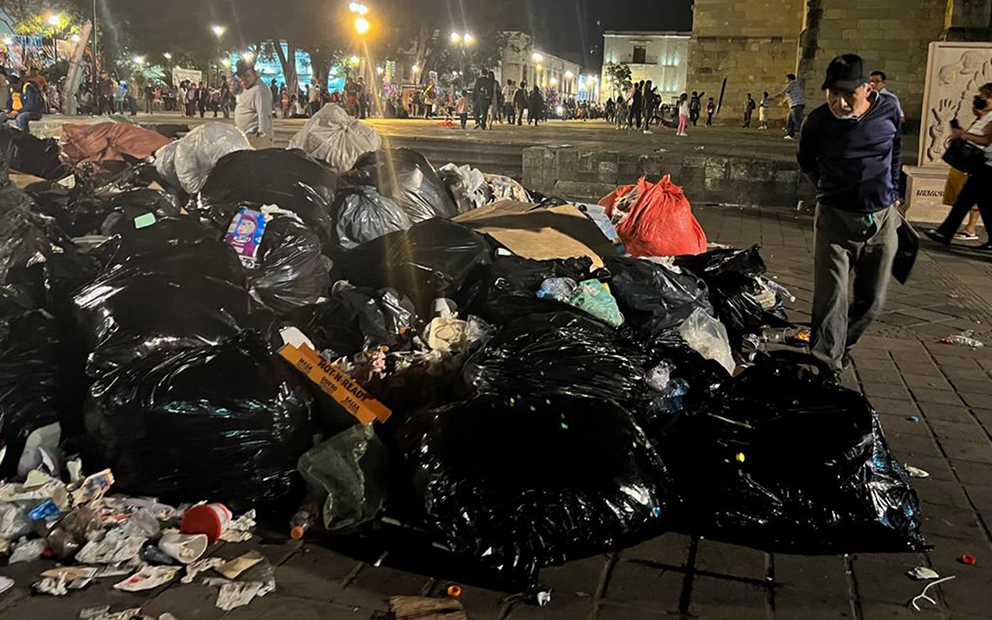In the struggle against megaprojects, and specifically against one of the zones of the trans-oceanic corridor, women are on the front lines in defense of their land, which is particularly important in the production of totopos.
Text and photos by Daliri Oropeza, originally published June 7, 2022.
Translated by Pie de Página in English.
PUENTE MADERA, OAXACA—Silvia Reyes is a Binnizá woman. She’s walking along the path that connects her town, Puente Madera, to the Transisthmic highway, on her way to the community assembly that’s being held in the school in the town’s center.
This week is crucial: the Agrarian Tribunal will decide whether to validate the proof demonstrating the assembly was fixed by outside interests wishing to impose an Industrial Park and a development zone of the Interoceanic Corridor Project in this Zapotec community in Mexico’s Isthmus.
Municipal representative David Hernández was to provide information about the nullification case put before the Unitary Agrarian Tribunal in Tuxtepec, Oaxaca. The people demanded the nullification of the outcome of the Communitarian Assembly dated March 14, 2021, because they detected irregularities. It was during the pandemic.
Silvia greets people along the way. She makes totopos, ground corn grounded in a nixtamal and toasted in a comixcal (a traditional oven). She comes upon some women who are toasting totopos, and stops to say hi.
She talks, and reveals a topography of dissent through stories of others she meets in her town. Under a huge mango tree, she goes over the irregularities related to the communal assembly in question: people were brought in who weren’t members of the community, signatures were faked in the meeting records, names and signatures were repeated, people who had already passed away signed, and, more recently, there have been threats to take “progress” elsewhere.
A wooden cart pulled by a horse sidles up, and wood is unloaded and given to a woman with a purple scarf who’s house is on the edge of the highway. Silvia explains that this wood is taken out of Pitayal, a flat area of spiney bushes that are also called monte, and that’s why they’re fighting for the land. “We’re defending it because we live here and we depend on it to live, that’s where we get the wood we need to work, to make totopos,” she said, heatedly.
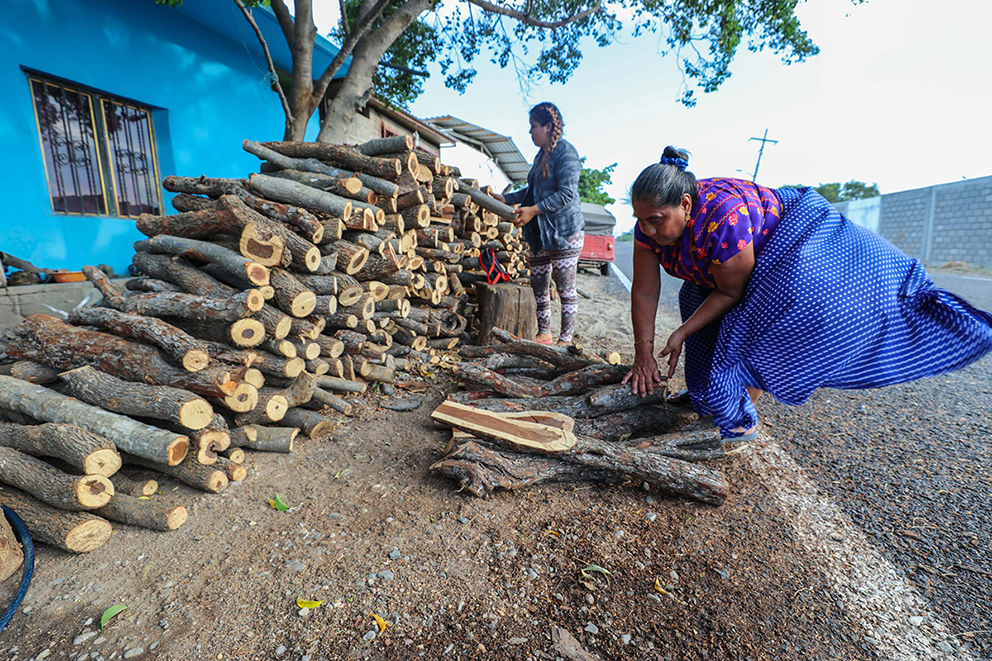
“Recently, supposed owners of those lands have been coming out of the woodwork. But [the lands] are communal! Those lands were left to us by our ancestors, my grandmother tells of that history. Rural smallholders, during Porfirio Díaz’ government, walked to México City to protest so that they could get titles for their lands, which are part of the town of San Blas,” said Silvia Reyes.
“They came back as owners. And now they are selling those lands to… How can I explain this? [Those lands] were meant to benefit the people. It’s an ecological reserve, where the campesinos go to cut wood so we can make totopos. When dragon fruit season comes, they also harvest fruit there.”
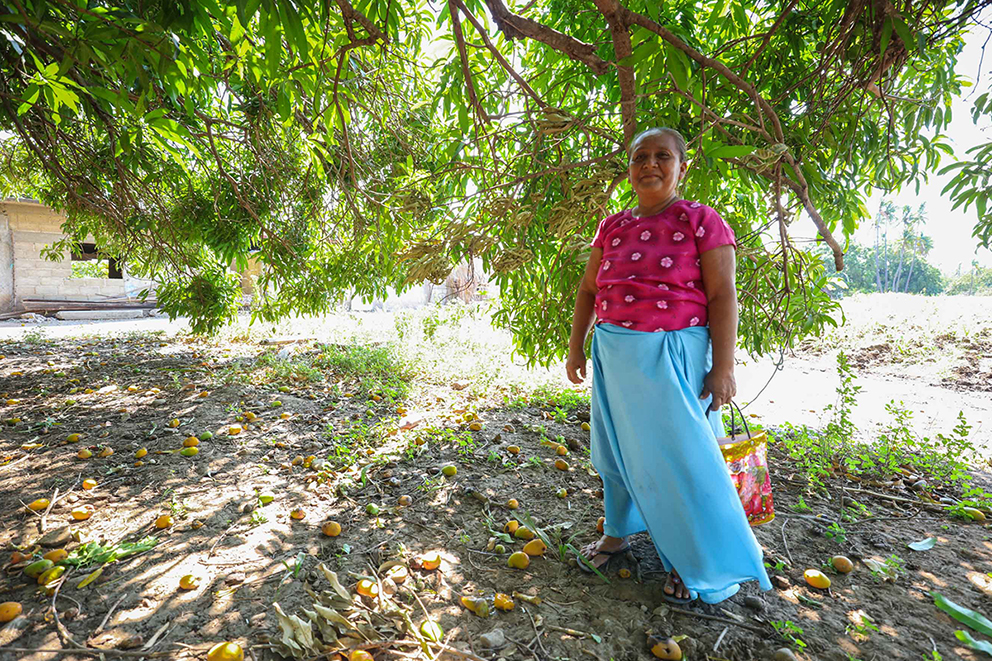
Previously, says Silvia, Monte el Pitayal was what fed the town, and there was even hunting for animals like deer, armadillos, bunnies and iguanas. But urbanization and climate change have completely modified Binnizá or Zapotec peoples’ life and surroundings.
She’s worried, however, because people from her community, and some from other local villages, have come forward with their own titles to communal lands. They did so in the context of a press conference held in favor of the Industrial Park and the Transoceanic Corridor Project development zone.
A megaproject in Puente Madera
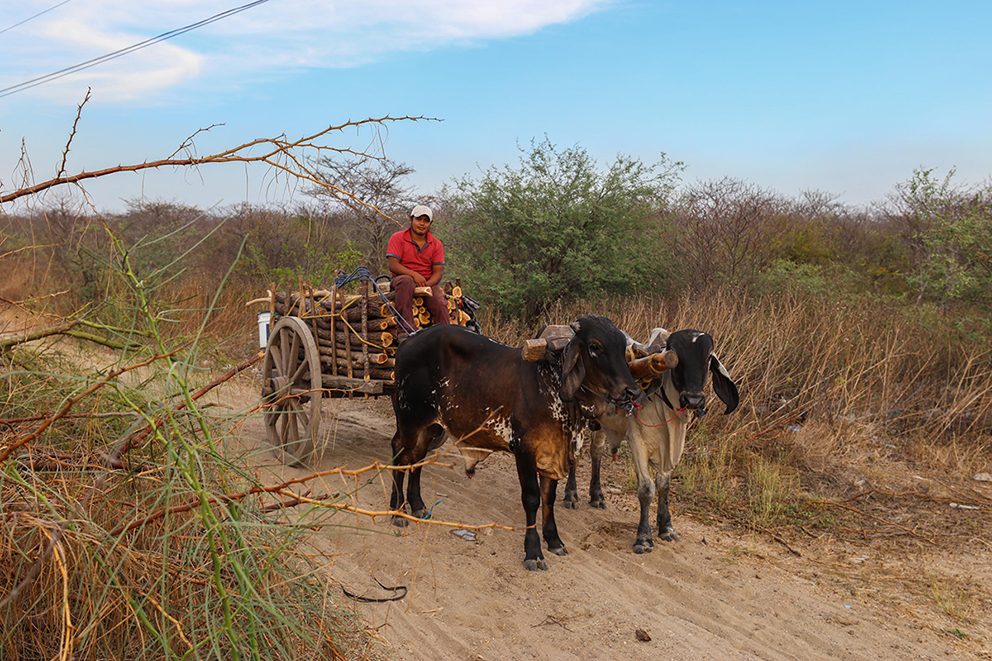
According to official information, the Interoceanic Corridor of the Isthmus of Tehuantepec includes 10 development zones.
Six of the zones are to be built in Oaxaca: in Salina Cruz, San Blas Atempa, Asunción Ixtaltepec, Mixtequilla, Ciudad Ixtepec and in El barrio de la Soledad. The other four are on the Veracruz side: San Juan Evangelista, Texistepec, Coatzacoalcos I and Coatzacoalcos II.
The development zone that threatens Monte El Pitayal cuts through San Blas Atempa, the municipality to which Puente Madera belongs. This development zone is connected to activities involving agro-industry, metals and metalworking, and leather and textiles.
Silvia walks across the fields where cows graze, and she meets a local resident who is about to leave for the assembly. His family eats elotes (maize on the cob) with lime and hot sauce just outside the comixcal where the totopos are being toasted.
He speaks to us, but asks to stay anonymous. He told us about the political environment in the town, which led to locals burning cars to force the end of exploration of Monte el Pitayal.
“People are really, really blind. I say to them ‘compañero, come here, let’s fight for what our grandparents left us. I’m poor, but even if I had money, I wouldn’t be able to ignore my roots, I’d still be here. It makes me sad not only for my family but also for my town, to see it like this, living this hypocrisy.
The man is a construction worker who has always supported the people of Puente Madera. They’ve even offered him positions in politics for his popular recognition.
“Even though they call us Indians, and they tell us this will bring a benefit and that ‘you’ll have progress and work,’ well, I think that’s only for people who have gone to school,” he said. “In what way is that going to benefit me,” said the man, who himself worked building dams and the Santa Cruz oil refinery. He claimed no one in the town benefited directly from those constructions, rather, the only benefits went to people from elsewhere. And they destroyed the Pitayal.
He traces the root of the problem to the election of Antonino Morales as mayor of San Blas Atempa. He says that even though Morales promised not to sell the lands, an electrical sub-station was built, upsetting residents. In addition, Morales has renovated his house, and is sometimes armed. He’s done so with supporters of the electrical industry and has supported the United Front of Oaxacan Communities (FUCO) a recently founded group that favors the installation of the industrial project.
“What I want is for the government to have a little bit of awareness, no? To take some time to come and see how we’re being impacted,” he said. “We want to dialogue with him, call Antonino and his people, let’s see who’s right. And we’ve got proof,” said the local resident, regarding the lands at Pitayal.
According to some locals, the Agrarian Office has promoted negotiations to convince communal land owners to hand over their lands and accept the project, and has emitted certificates of possession of communal lands without an assembly process. In other regions, it has named a ejidal (communal landowners) commission, as in Ixtaltepec, and expropriated lands and paid off “owners” with special privileges, as in Mixtequilla and Ixtepec.
Protesting with fire
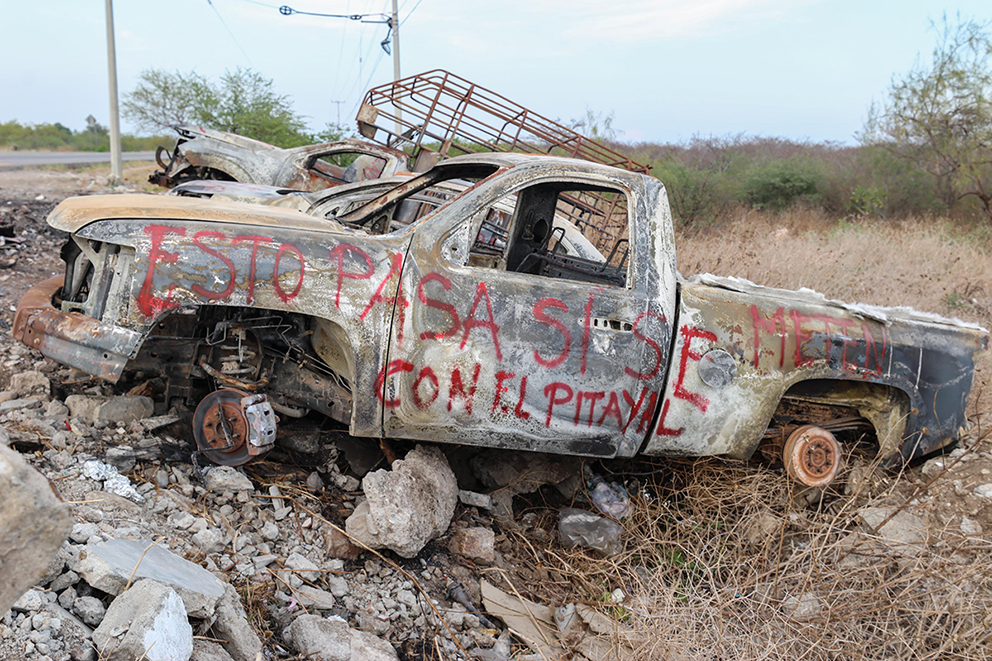
Silvia describes the morning that the entire town went out, women and men, to stop the exploration in Monte el Pitayal. Workers were the ones who sounded the warning, and the women mobilized the town.
“They want 500 hectares, can you imagine? What kind of industry is that?”
“My son went out to his workshop and he saw that there were a lot of cars there and a lot of people had arrived, all those cars and all those people that had arrived, and went into [the Pitayal]. When we realized that, we called the other compañeros, the people who were here went out, we went out, and about 20 of us went in too.”
“The municipal police arrived together with the same people who had manipulated the results [of the assembly]. There was an assembly before the lands were surveyed, and in that assembly people from the FUCO foundation and the Morena party were brought in,” said Silvia. “We don’t want any of them anymore. All the candidates are the same.”
“The National Guard was there guarding the space,” added one woman eating elotes. The women who were in the kitchen came out and offered totopos and tamales.
“It’s not good, people are manipulated with small amounts of money, they allow themselves to be manipulated,” said Silvia, with regards to the people who have obtained land titles or accepted other gifts, such as nixtamal machines, in exchange for supporting the industrial project.
“They don’t care about selling off [Monte el Pitayal], they don’t understand the damage it’s going to do, not just to us, to everyone. Even to those in Santa Rosa, which is nearby, or in Rancho Llano.”
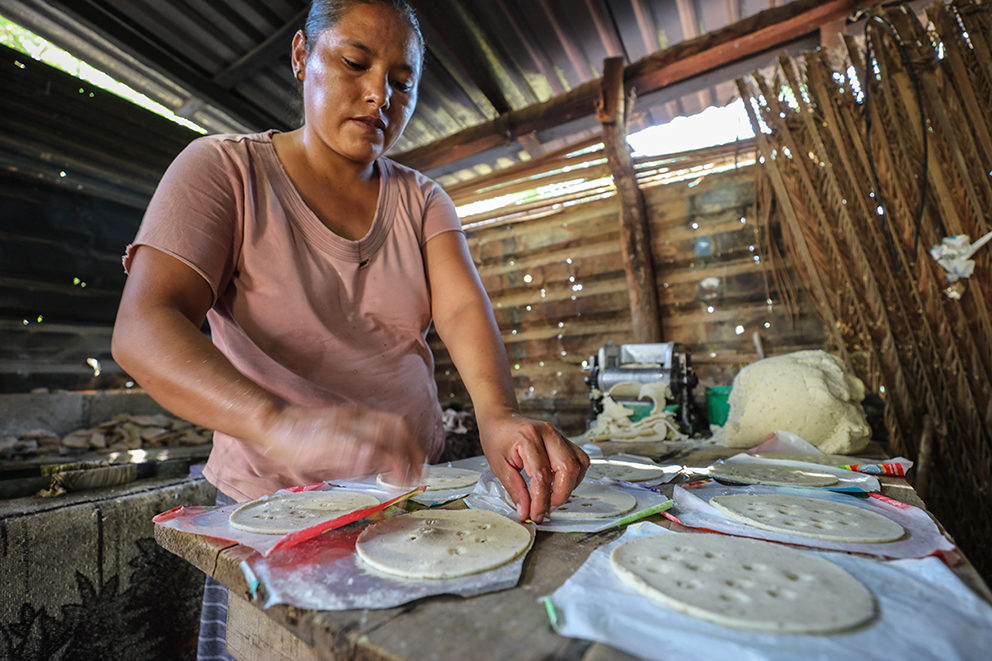
After the protest against those who went into Monte el Pitayal, things became clearer in the community.
The woman who is handing out the elotes adds her voice to Silvia’s.
“They don’t have information about it, that’s why they don’t join the struggle. Imagine the risks to health that these industries present, the risks to our lives. Just like with the wind turbines. Maybe it won’t be bad for us, but it will be for future generations.”
There has been an effort to criminalize people who provide information to the people in the town. “They weren’t the ones who burned the cars, the town burned the cars. And if they have to go to jail, we’ll all go,” said one woman.
The Binnizá people in Puente Madera are very united. When the water pump broke, the municipality didn’t fix it, rather the entire town did, after organizing an assembly. The woman eating elotes explains that the majority of people migrate looking for jobs, and that in a way she can understand why some want the industry. Regardless, she worries about contamination and urbanization.
“In January, we again named David Hernández Salazar as our town representative, because he is the only one who stands up for the town, he helps up with everything,” said Silvia.
The protest with fire is part of the constant dispute on the part of the people of Puente Madera against the appropriation and the stealing of their communal lands in Monte El Pitayal. They see those efforts as illegitimate, as is the handing over of certificates of ownership by Agrarian authorities in Tehuantepec in the context of preparatory work to install an industrial park.
In a press release, the Assembly of Indigenous Peoples of the Oaxacan Isthmus in Defense of Life and Territory (APIIDTT) said last April that representatives of the community of Puente Madera met with authorities and shared their concerns with them.
They met with Rafael Marín Mollinedo, the head of the Inter-Oceanic Corridor of the Isthmus of Tehuantepec (CIIT), with Gonzalo Villalobos López, a representative of the Agrarian authority of Oaxaca, and with Lila Rodríguez Villanueva, the regional head of the Agrarian authority in Tehuantepec.
The APIIDTT said they were asked “why we are upset, and why we are opposed to the development of San Blas Atempa and the Isthmus of Tehuantepec?” The federal government claimed it won’t violate the rights of Indigenous peoples. It threatened to take the megaproject elsewhere so that the town would be left without a source of employment and progress.
“Of course the government is violating human rights, they are doing so by imposing megaprojects without consent, by pointing fingers, ranting and raving, intimidating and threatening those who defend our land and territory,” reads their communiqué.
“We won’t permit machines to enter Monte El Pitayal, or any other works that threaten our communally owned lands. No to the industrial park. We demand the revision and the cancellation of titles of communal lands.” They named two employees of the agrarian authority personas non gratas. To date, they have not received confirmation that the megaproject is active or if it has been moved elsewhere.
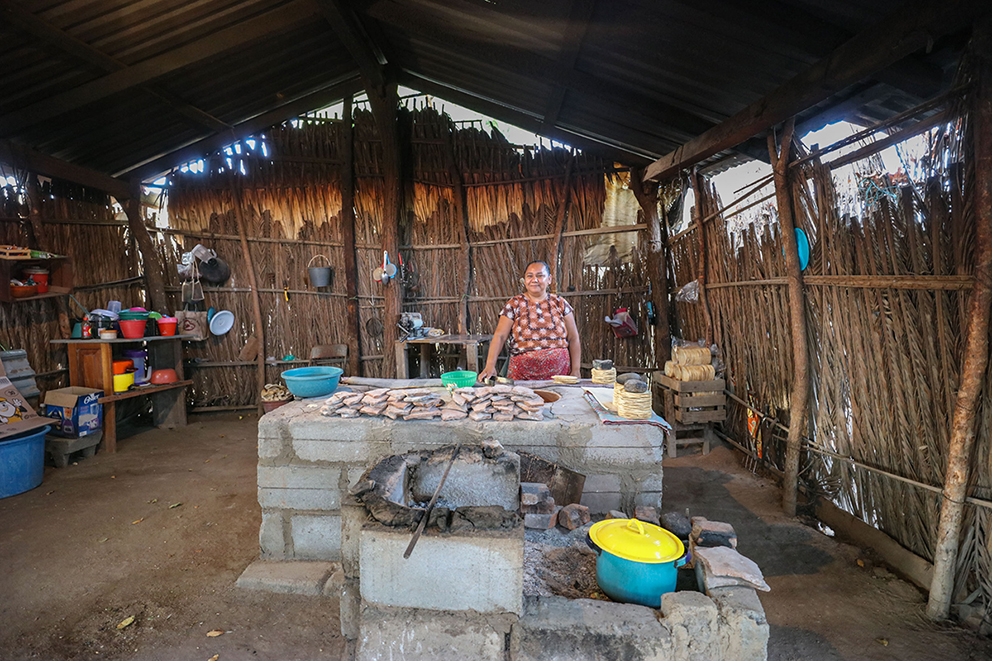
Nostalgia for the land
The walk to the assembly is a pretext to stop by the kitchens of the women who make totopos. They work day and night, and are rarely seen resting.
Silvia meets up with Hilaria, who tells us how her uncle lived in the Pitayal during a period when he was hard up. They mostly speak Diidxazá (or Zapotec), and they talk about nostalgia.
At the time, they were recently married, and they kept their cattle and had a traditional house, where they grew old and died. Their descendents went to live in San Blas, and they left the land and no one else took it. They didn’t pass it on to their children, rather, their children bought land elsewhere, respecting the community space.
Not only is Monte el Pitayal a source of fuel and food, it has also long been used by community members in need of a space to live.
Click here to sign up for Pie de Página’s bi-weekly English newsletter.
Ayúdanos a sostener un periodismo ético y responsable, que sirva para construir mejores sociedades. Patrocina una historia y forma parte de nuestra comunidad.
Dona

